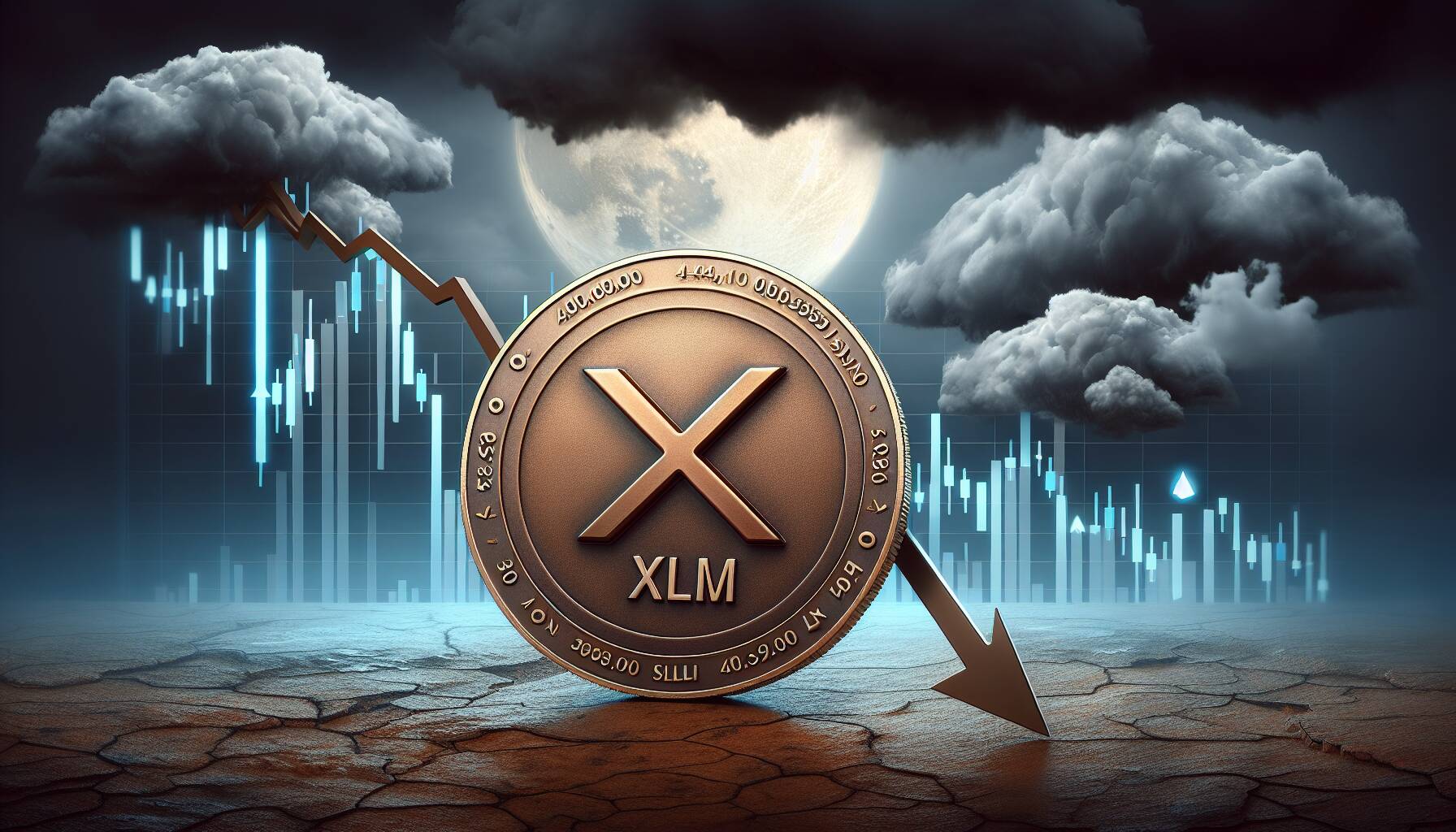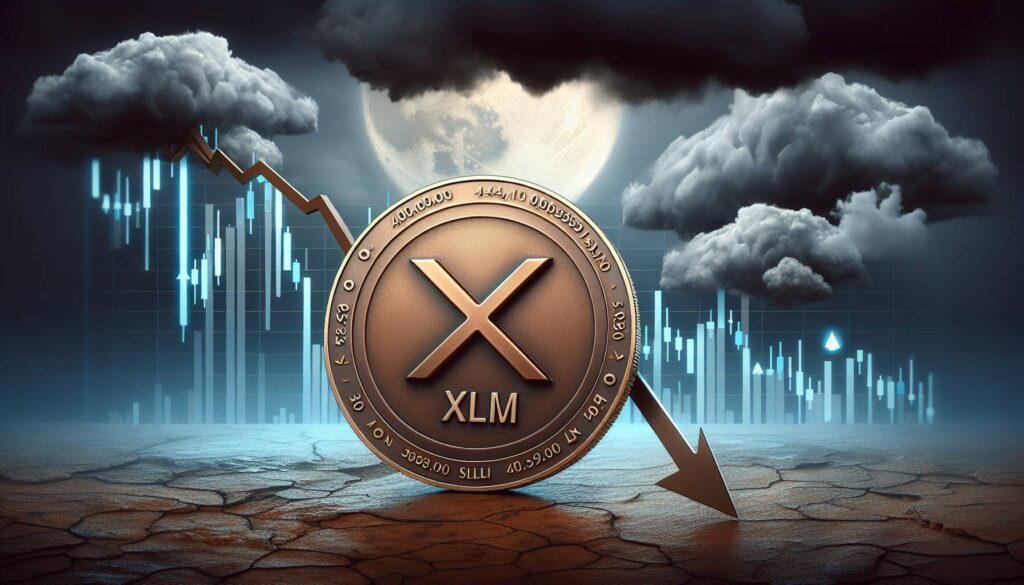In recent trading sessions, Stellar’s XLM token has encountered significant challenges, reflecting a bearish trend that investors are closely monitoring. Over just 23 hours from September 29 to September 30, the token experienced a decline of 4%, slipping from $0.38 to $0.36. This downward movement occurred within a tight range, highlighting the token’s difficulties in maintaining upward momentum amidst strong selling pressure.
The early resistance level of $0.38 faced substantial institutional selling, with trading volumes peaking at 38.6 million during the initial decline. This signal of heavy trading underscored a cautious atmosphere, as another round of selling at the same price point saw volumes reach 18.6 million, further establishing a bearish sentiment in the market. Support levels were identified at $0.37 and $0.36, attracting notable defensive buying late in the session, indicated by a surge in volumes to 31.4 million.
While heightened activity at $0.36 suggests some level of accumulation, the overarching market structure—characterized by a series of lower highs and lower lows—continues to point towards a prevailing bearish bias.
The situation escalated when XLM found itself breaching the psychological barrier at $0.37, solidifying the notion of ongoing downside pressure. The token concluded the 24-hour period with a failed recovery attempt at this critical level. Just before the session ended, trading volumes increased once more but were met with rejection, finalizing the 4% drop.
As the market continues to evolve, the dynamics around XLM raise questions about potential future movements. The resistance remains firm at $0.38, with significant trading activity indicating an ongoing struggle between buyers and sellers. Observers will be keen to see how these developments unfold in the coming days as institutional trends and market sentiment intertwine.

Stellar’s XLM Token Market Analysis
Key points regarding the performance and market dynamics of Stellar’s XLM token:
- Bearish Pressure: XLM faced a 4% decline from $0.38 to $0.36 over 23 hours.
- Narrow Trading Range: The token’s pricing volatility remained within a $0.01 range, highlighting challenges in sustaining upward momentum.
- Institutional Selling:
- Initial resistance at $0.38 coupled with a trading volume of 38.6 million indicated significant institutional selling.
- A secondary rejection at $0.38, with 18.6 million in volume, reinforced bearish market sentiment.
- Support Levels:
- Support emerged at $0.37 and $0.36, with the latter seeing strong defensive buying as volumes spiked to 31.4 million.
- High-volume trading at $0.36 suggests potential accumulation, despite the prevailing bearish trend.
- Technical Indicators:
- Breaching the psychological level of $0.37 confirmed extended downside pressure.
- Final hour trading saw a failed recovery attempt at $0.37, closing with a 4% cumulative decline.
- Market Structure: A pattern of lower highs and lower lows points to sustained institutional distribution and weakening investor confidence.
- Liquidity Concerns: Zero volume reported during specific time frames suggests potential liquidity exhaustion in the market.
The described dynamics of XLM’s trading patterns, resistances, and supports are crucial for investors to understand market trends and make informed decisions. The bearish sentiment may influence their trading strategies and risk management practices.
Stellar’s XLM Token Faces Bearish Headwinds Amid Market Dynamics
Stellar’s XLM token experienced significant downward pressure recently, with a 4% decline in a very tight trading range. This volatility, which saw the token fall from $0.38 to $0.36, mirrors broader trends in the cryptocurrency market where other altcoins are grappling with similar bearish sentiment. What sets XLM apart, however, is the pronounced resistance it faces at the $0.38 mark, fueled by considerable institutional selling pressure. This critical resistance area has become a battleground for traders, indicating strong interest but also highlighting the challenges XLM encounters with maintaining upward momentum.
Competitive Advantages: The token’s ability to draw defensive buying support around $0.36 suggests that there are investors willing to accumulate at lower levels. This could be beneficial for those looking for entry points in a potentially undervalued asset. Additionally, the increased trading volume during periods of defense indicates a robust trading environment where active traders can capitalize on volatility.
Disadvantages: Despite these advantages, the overall market structure is leaning towards bearish, characterized by a series of lower highs and lows. This scenario could deter long-term investors, especially those focusing on stable growth. Moreover, the repeated failed attempts to sustain price above the psychological $0.37 could fuel pessimism among traders, possibly leading to panic selling if bearish trends continue.
In terms of beneficiaries, active day traders and short-sellers might find this environment lucrative, as they can exploit short-term price fluctuations. Conversely, long-term holders of XLM might face challenges in maintaining their positions and could be adversely affected by extended downside pressure. As volatility persists, market sentiment will play a crucial role in determining the future trajectory of the XLM token, reflecting broader trends across the cryptocurrency landscape.
















